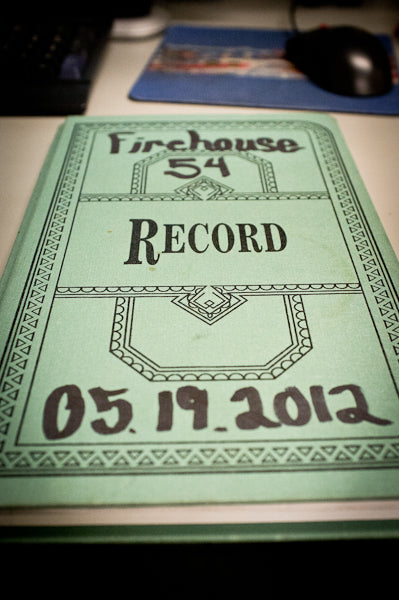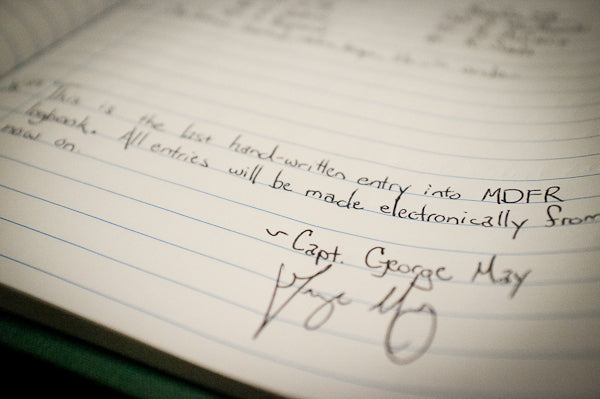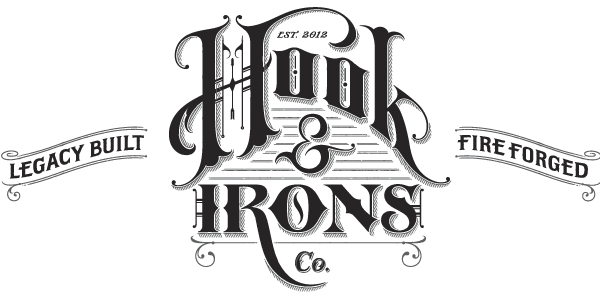Hook and Irons
The Flynn Effect April 22 2013, 5 Comments

Much has been written in the journals and periodicals about the new generation of firefighters and how they are different from previous generations--not as worthy, not as smart, and more self-centered. We bemoan how they 'should be' and don't spend enough time getting them where they need to be. Certainly, at MDFR we have seen our share of questionable employees pass through our house. But I won't categorize the younger firefighters by their worst examples as each generation has its share of 'less than motivated' employees. Instead, I find most of the probies to be intelligent in ways that often surprise and sometimes humble me. And I have no doubts that tomorrows firefighters will be smarter than I am. But I do occasionally find them to be lacking and disappointing in ways that I've come to understand is a result of today's society.
But first let's talk about how they're smarter:
James Flynn is a researcher from New Zealand who discovered and coined The Flynn Effect. The Flynn effect is an explanation for the steady rise in IQ scores from generation to generation. He contends that the rise in IQ scores proves that this generation is more intelligent than the generation before and so on and so on. The effect is caused by each generation growing up with the increased benefit of looking at the world with 'post-scientific' spectacles. We classify, we analyze and we think more abstractly. In general, according to Flynn the rise in IQ scores is largely due to increased reasoning skills. Those increased reasoning skills allow us to solve more complicated problems than the previous generations. Additionally, more time is spent on mental pursuits than ever before. Proof is in the internet, the video games, the tv, the fantasy leagues and so forth.

And I can buy all of this. I believe James Flynn and hope he is right. I want my son to be smarter than me and I want him to benefit from the research and work of my generation. In the station, what I observe from my young guys allows me to generally agree with the Flynn Effect although as a good Captain, I will never admit that any of them are smarter than I was at their age. I can say I honestly spend very little time explaining the ideas of fire growth or the incident command system. These concepts and the importance of understanding them seem clear to most of the young guys. In fact, these are the things that most of the young guys cling to and quickly understand. I can also say that most of them can reason through tactics and strategy scenarios as well as most of our experienced chiefs. These are the areas that truly impress me.
The problem in the fire service right now is something I'll call the 'Y Gap'. I call it the 'Y Gap' because this is the generation that seems to suffer the most from this problem. The 'Y Gap' is, the distance between intelligence and physical skills. If the distance is short, you probably have a good firefighter on your truck. The good firefighter is intelligent, shows good foresight and has good hands-on skills. They can swing an axe, work a saw and don't buckle with the fear of heights. Additionally, they know when to put these skills to use. The 'gap' that I see is an increase in intelligence and a decrease in physical ability. Many of our recruits have never mowed a lawn, changed their own oil, worked a chainsaw, or swung a hammer. Instead, they pay someone to mow their lawn, change their oil and if they need to nail something they use a nail gun instead. We receive these guys without the base knowledge of mechanics and form used to do so many things on the fire ground. This is the area that most of the new guys suffer and the area that the academies do not focus on. So we get guys who can tell us the phases of fire, but have no idea what a two stroke motor is.
The answer is to go back to the beginning--take your probie to the saws and teach them why it's a two stroke engine and how it works. Then, let them cut scrap metal until they look like their not scared of the saw anymore. After that, challenge them to make cuts of increasing skill and so on until they know the saw well enough to cut any material in any fashion you ask. None of this takes intelligence. None of it takes reasoning or analytical skills. What it takes is form and practice and with enough of it you gain muscle memory--and with muscle memory you gain skill. And that is why I will always respect the old guys like my dad, who, while driving to a fire years ago felt the truck die to an idle at his feet. He popped the cab, saw that the throttle spring was gone and replaced it with a piece of the elastic chinstrap on his helmet. He made it to the fire (was last in) but he made it. And he made it there because he has common sense and grew up working on cars and performing a lifetime worth of manual labor.
So, if you are one of these new guys, I suggest you start changing your oil, mowing your own lawn, digging out your own stumps even though your intelligence and reasoning skills might tell you that there is an easier way to get it done. You never know, it just might save your life one day.
-George

Hugh Halligan's Masterpiece Revisited November 28 2012, 9 Comments
When we created Hook & Irons Co. we came up with the Signature Line as way to pay homage to the parts of the fire service that are historically significant-- the parts of the fire service that so many of us feel passionately about. We brainstormed over so many things during those first days, but always, and without question, we were certain that we wanted to create a shirt honoring every fireman's favorite tool, the Halligan bar.

Hugh Halligan on right
Hugh Halligan is an icon of the fire service. With FDNY, he rose to the rank of Deputy Chief and is remembered as a 'fireman's fireman' working on many of the busiest companies in the city. But, he is known best for the tool he invented that is still carried on nearly every fire truck in America. While today's versions may have been refined a bit, and are now built by different manufacturers, they are very nearly the same exact tool that Halligan invented in the 1940's.
The original Halligan tool was made of cross-drop forged from one piece of No. 4140 (high carbon content) steel, and weighed 8 ½ lbs. This was a great improvement in strength and weight over its predecessors, The Claw and Kelly tool. The standard bar was approximately 30” in length, with a 15/16” shaft shaped into a hexagon for grip. The fork was a minimum of 6” long tapered into two well beveled tines. Spacing between the tines allows for a gas valve to be shut off. And stamped into the steel of the forks of the original Halligan tool was Hugh's signature and the letters AM + DG. Chief Halligan was a very religious man and it is widely believed the letters stood for the Latin phrase , Ad Majorem Dei Gloriam or “for the greater glory of God.” This phrase was a favorite of St. Ignatius of Loyola, founder of the Society of Jesus. Pope John Paul II routinely used it in his writings. He would print AMDG in the top left of every page he wrote. The + sign is widely believed to represent a cross.

When creating the shirt, it was important to us to include these elements into the design. We used the original advertisements as inspiration and we picked colors that we thought were as hard-looking as the drop-forged steel of the Halligan tool. The typography is chosen and inspired from the ad, as well as the slogan, "Yes! It is an Ugly Bar." The ribbon at the bottom of the shirt (also taken from the ad) represents the Boston Fire Department who was the first to recognize the genius of the tool and put one on every single truck in Boston.


The genius of the Halligan tool becomes apparent in the hands of a skilled operator and when properly used – provide protection to the arms, hands, and body of the holder during forcible entry operations. Pound for pound, it is the best tool on any rig and paired with a flat-headed axe, the Irons are a Truckie's best friend.
To this day, there are fire companies who still carry and use an original Halligan tool on their rigs. Tools that are nearly 70 years old and still working to this day. Yes, it is an UGLY tool! and yes we are very proud to offer Hook & Irons second Signature Tee--The Halligan Tee.

*All the research for this blog and the t-shirt were done on-line. Information was gathered from a wealth of stories and articles, conversations and forum posts. Thanks to Rob Fisher, Irons and Ladders, and Hugh Halligan's own article entitled, "The Halligan Tool" which appeared in a 1950 issue of WNYF for which most of this research was taken.
Close the Book October 11 2012, 10 Comments
This week, my department released a very short, simple memo. It stated that on Monday October 8, 2012 Miami-Dade Fire Rescue would no longer maintain a hand written logbook. Perfunctory and to the point, the e-mail was sent to every firefighter in our department.

There wasn't a pause, a moment of silence, a last alarm, or even a mention of the tradition we killed in the name of efficiency. No one said a eulogy and no one rang a bell for the thousands of officers that had carefully documented everything that had happened on their watch at their station on any given day in Dade County. To think about the millions of calls our department has run in almost a hundred years is one thing. To see the volumes of logbooks that document every one of them is another.
Why was I so bothered by this change? Every other officer I talked to seemed thankful that this extra bit of work was being lifted from our shoulders. Don't get me wrong, at three o'clock in the morning there is no higher form of drudgery than sitting down and documenting some call that was anything but an emergency. Why, after five day, does this change still bother me? This was something that I had a hard time putting my head around. I'm certainly not a technology hater or a doomsday prepper. I have my iphone in my pocket. I'm on Facebook. I love having the TIC at my side going into a fire. And I'm sure the department has all of our documents secured on servers in fireproof rooms and virtual iclouds. Then it hit me.
Those logbooks--those documents written in so many different handwriting styles, are the only substantive evidence of the daily work we do. Those books are the only thing that you can pick up, feel, read, and see what that day--any day cost us. You can see it in the chicken scratch of tired officers or the careful letters of men who are not used to writing much more than their name. But most of all, you could walk in before your tour, run your finger down the column of calls and see if your brothers had a fire, a rough night, or if the gods were kind and let them sleep.
So this blog is not so much about blasting technology. It is more a warning to consider the things you leave behind in the name of efficiency.

What was lost today? Today I lost that moment in the morning when I sit with my coffee and write the names of each member of my company--that moment where I sit and consider their strengths and weaknesses and how I will use them in different situations. Sure I will still do this. I'll just have to find another way. And for me, writing these names was a reminder to myself, a contract that I am beholden to that states that I'm responsible for the safety of each firefighter at my station. If you don't believe me you can look for yourself and see it written in black and white on the page.
There isn't a blinking screen in the world that can provide that same feeling.

